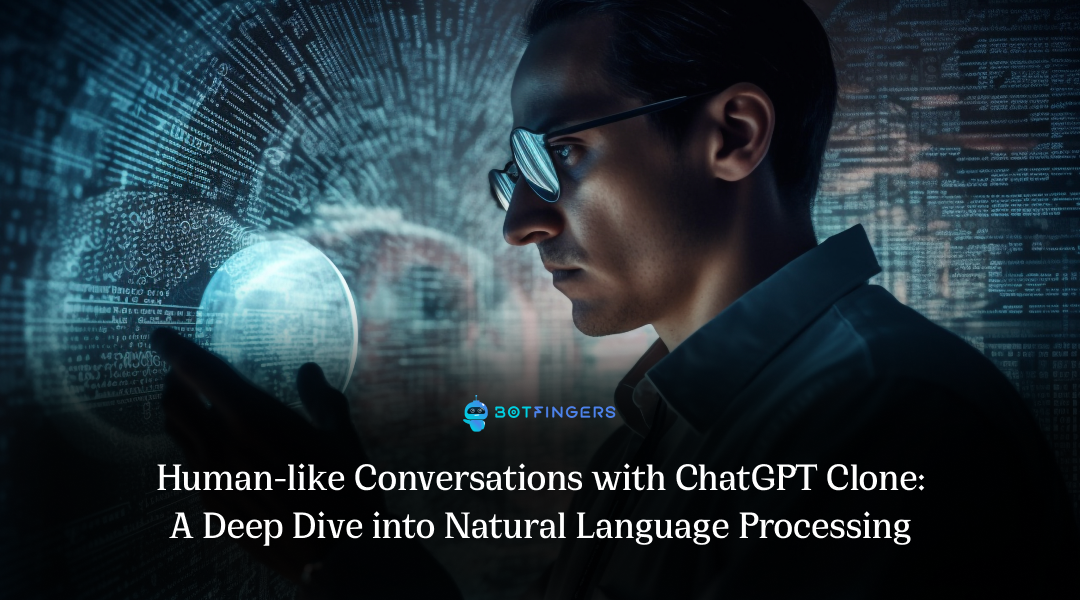With advances in natural language processing (NLP) and the popularity of OpenAI’s ChatGPT, the development and deployment of ChatGPT clones have increased. These clones are intended to mimic ChatGPT’s conversational abilities and create engaging user interactions.
NLP is a branch of artificial intelligence (AI) that studies the interaction of humans and computers using natural language. It entails comprehending, interpreting, and creating human language to facilitate successful communication between humans and machines.
Human-like dialogues are important in AI because they increase user engagement and create a more consistent user experience. AI systems can better comprehend user demands, respond correctly, and develop trust and relationships with users by attempting to mimic human communication.
Recognizing ChatGPT clones
OpenAI created the ChatGPT AI language model. It is taught using enormous volumes of text data and can respond to human inputs coherently and contextually relevantly. ChatGPT can handle a wide range of conversational subjects and provide useful and entertaining exchanges.
ChatGPT clones are models constructed using ChatGPT’s architecture and training procedures. Their goal is to mimic ChatGPT’s conversational abilities to give similar experiences to consumers, either as standalone chatbots or as integrations into various applications and platforms.
The advantages of employing ChatGPT clones include improved customer service, increased user engagement, and increased efficiency in dealing with enormous amounts of user enquiries. Maintaining coherence in talks, overcoming biases in generated responses, and assuring ethical use of technology are all issues.
Exploring natural language processing (NLP)
NLP employs a variety of approaches and algorithms to process and comprehend natural language. It can be used for machine translation, sentiment analysis, information retrieval, question answering, and other tasks. NLP enables machines to understand and generate meaningful human language.
Language modelling, sequence-to-sequence models, attention mechanisms, and transfer learning are among the NLP approaches used for human-like dialogues. These strategies aid with the comprehension of user input, the generation of contextually relevant responses, and the maintenance of conversation flow.
ChatGPT clones process and create text using strong NLP models such as transformer models. These models use attention techniques to record word dependencies and learn contextual representations. ChatGPT clones learn and generate coherent responses by training on big datasets.
Improving conversational skills
Methods for improving chatbot responses through training:
Training methods such as reinforcement learning and supervised fine-tuning enhance chatbot responses. Iterative input from human evaluators is used in reinforcement learning, whereas fine-tuning involves training on specific datasets to align the model’s behaviour with intended outcomes.
Managing context and producing coherent responses:
ChatGPT clones make an effort to comprehend and keep context throughout a conversation. Attention mechanisms and memory modules allow models to store and use previous information, resulting in more coherent and context-aware responses.
Identifying and addressing limits and biases in chatbot interactions:
Due to training data biases or a lack of real-time understanding, ChatGPT clones may demonstrate limitations and preferences in their responses. Ongoing research aims to reduce these concerns through data augmentation, bias detection, and varied training datasets.
Real-world applications
ChatGPT clones are useful in customer service because they provide rapid solutions to frequently asked queries and assist customers in troubleshooting common problems. ChatGPT clones enable virtual assistants to handle scheduling, present information, and make customized recommendations.
ChatGPT clones can be used as educational tools, assisting students with language practice, answering questions, and providing interactive learning experiences. They can imitate native-language conversations, provide explanations, and immerse learners in immersive language learning environments.
ChatGPT clones can improve user experiences in entertainment platforms and recommendation systems by offering movies, books, music, or tailored content depending on user preferences. They can employ interactive storytelling to captivate consumers or build dynamic characters in-game environments.
Prospects and challenges
NLP advances and expected future developments:
NLP is a fast-expanding area, and continuing research strives to increase ChatGPT clones’ capabilities. Future advances include increased contextual awareness, ambiguity handling, and conversational flow.
Human-machine interaction implications:
ChatGPT clones can transform human-machine interactions as they get more complex. They may help with tasks, be companions, and bridge communication difficulties. However, the development and implementation of these systems must be guided by ethical considerations.
Concerns about ethics and the necessity for continued research:
The usage of ChatGPT clones raises ethical concerns about the appropriate use of artificial intelligence, potential biases, and the influence on employment. Continued study, industry-academia partnership, and moral rules can resolve these problems and ensure beneficial outcomes.
Conclusion
Human-like discussions with ChatGPT clones provide better user experiences, customer service, and higher engagement. They bridge the gap between humans and technology, allowing for more natural and intuitive interactions.
Responsible and ethical behaviours must be prioritized by stakeholders involved in developing and deploying ChatGPT clones. To achieve a beneficial impact on society, transparency, responsibility, and user privacy should be prioritized.
NLP and its impact on AI interactions have enormous promise in the future. NLP models, such as ChatGPT clones, will be important in advancing conversational AI as technology advances, enabling more sophisticated and context-aware human-machine interactions.

